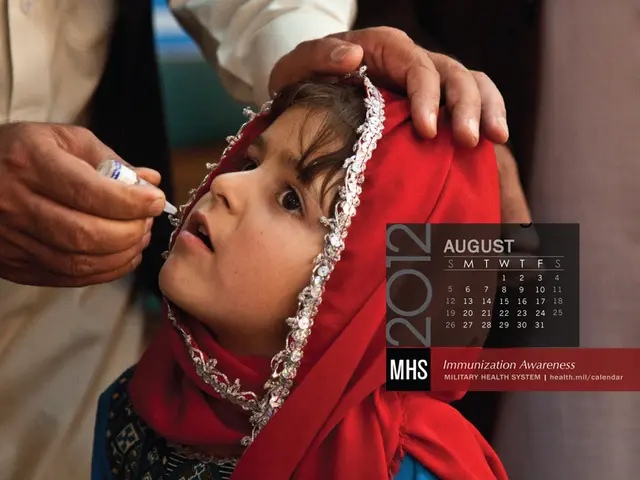Penis Pimple: Understanding Causes, Remedies, and When Professional Help is Necessary
In our daily lives, we often encounter various skin irregularities, one of which is the common pimple. However, it's essential to be aware that certain symptoms might indicate a more serious condition, such as a sexually transmitted disease (STD).
Pimples, medically known as comedones, occur when oil glands on the skin are blocked by oil, dead skin cells, or debris. They may appear as small, round bumps on the skin's surface, with a red or flesh-coloured base. While medical treatment is rarely required for pimples, it's crucial not to pop or itch them to avoid permanent scarring and superimposed infection.
On the other hand, genital herpes and genital warts can also cause blisters or bumps to appear on the penis. Genital herpes causes gray-white blisters with a red base to develop on the penis or surrounding areas. These blisters can become open sores and ooze fluids, then crust over. Genital warts, a sexually transmitted disease, can cause the growth of small, flesh-white coloured bumps on the shaft or head of the penis.
Signs and symptoms that a pimple on the penis might actually indicate an STD include a small, firm lump or bump that may be fluid-filled and tender or spongy to touch, pain or discomfort, redness and swelling at the affected site, discharge from the penis, painful or burning urination, sores or blisters, fever, body aches, feeling generally unwell, swollen lymph nodes, and unusual vaginal bleeding in partners, pain in the testes, or lower abdominal pain.
If a pimple or bump on the penis is accompanied by any of these symptoms, it is important to seek medical evaluation promptly to determine if it is an STD and to receive appropriate treatment. Early diagnosis helps prevent transmission and complications.
Factors that increase the likelihood of a pimple include tight-fitting clothes, humidity, excessive sweating, poor hygiene, oily skin, and poor hygiene. Methods to reduce the risk of pimples include avoiding humid environments, minimizing activities that induce sweating, wearing loose-fitting clothing, showering regularly, avoiding rubbing or touching the affected region, changing bedding and clothing regularly, and using over-the-counter medications like benzoyl peroxide, salicylic acid, or exfoliants.
Genital warts can be treated with creams or freeze and heat therapy, while genital herpes is usually treated using antiviral drugs. Syphilis, another STD, can cause white or red painless ulcers on or around the penis. Syphilis is a bacterial infection that can pose a serious health risk if left untreated and is typically treated using antibiotics.
It's essential to remember that pimples can occur regardless of sexual activity. However, any new genital bumps should be monitored and tested by a healthcare professional to rule out infections such as herpes, HPV (causing genital warts), or other STIs. When in doubt, always consult a healthcare professional.
1.omen with eczema may experience red, itchy, and inflamed skin, which can affect the genital region as well, emphasizing the importance of maintaining skin health.
2.In addition to pimples, type 2 diabetes can manifest symptoms such as increased thirst, frequent urination, and blurred vision, highlighting the need for regular nutrition and medical care.
3.Skin care is not only about acne and pimples; it extends to sexual health as well, making it crucial to practice safe sex and monitor for sexually transmitted diseases (STDs).
4.Among various medical-conditions, asthma, COPD, and diabetes are linked to poor health-and-wellness outcomes, underlining the significance of medical care and therapy in managing these conditions.
5.Science continues to advance predictive technologies for identifying health risks and optimal treatment plans, enabling us to proactively address issues like diabetes, skin-care concerns, and sexual-health problems.
6.Tight-fitting clothes, high humidity, excessive sweating, and poor hygiene can contribute to the development of not only acne and pimples but also various health and wellness issues, including STDs.
7.Medical research and healthcare professionals play vital roles in diagnosing and treating a wide range of conditions, from eczema and acne to STDs like herpes, HPV, and syphilis.
8.Healthy nutrition not only supports a strong immune system and overall wellbeing but can also help prevent certain conditions like diabetes and eczema, underscoring the importance of maintaining a balanced diet.
9.By staying informed, monitoring our bodies for changes, practicing good hygiene, and seeking medical attention when necessary, we can better ensure our health, wellness, and sexual health.




